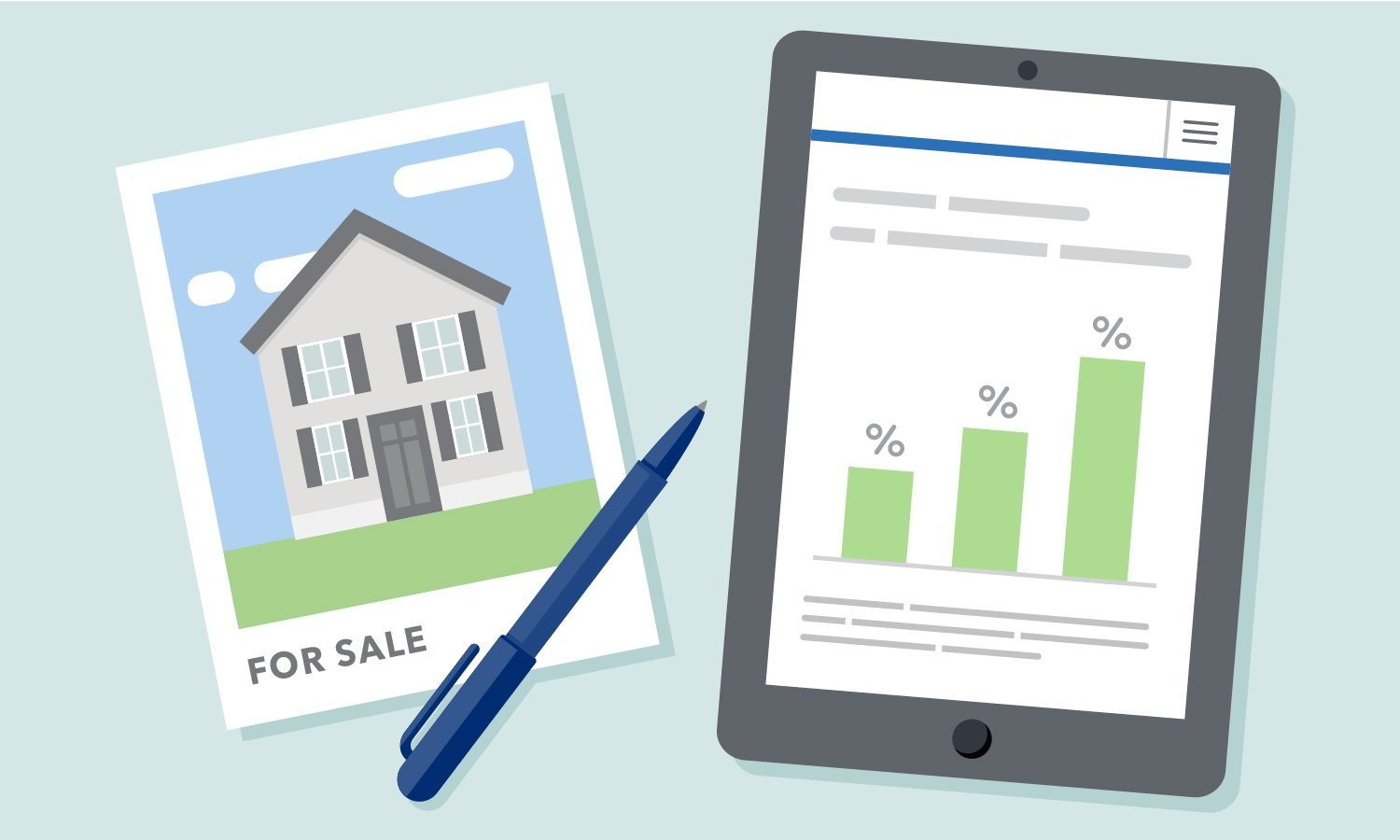

Finance
What Is APR In A Mortgage Loan?
Published: March 3, 2024
Learn about the importance of APR in mortgage loans and how it impacts your finances. Understand the role of APR in managing your mortgage effectively.
(Many of the links in this article redirect to a specific reviewed product. Your purchase of these products through affiliate links helps to generate commission for LiveWell, at no extra cost. Learn more)
Table of Contents
- Understanding the Significance of APR in a Mortgage Loan
- Understanding APR in the Context of Mortgage Loans
- Recognizing the Significance of APR in Mortgage Loans
- Factors Influencing the Annual Percentage Rate (APR) in Mortgage Loans
- Comparing Different Mortgage Loan Offers: Unveiling the True Cost Through APR
- Conclusion: Navigating Mortgage Loans with Clarity and Confidence
Introduction
Understanding the Significance of APR in a Mortgage Loan
When embarking on the journey of homeownership, securing a mortgage loan is a pivotal step. Amidst the myriad of terms and figures associated with mortgage loans, the Annual Percentage Rate (APR) stands out as a crucial metric that necessitates a comprehensive understanding. The APR encapsulates the true cost of borrowing, encompassing not only the interest rate but also various fees and charges incurred over the life of the loan. This article aims to demystify the concept of APR in the context of mortgage loans, shedding light on its significance and the factors that influence it.
As prospective homeowners navigate the labyrinth of mortgage options, comprehending the role of APR in evaluating loan offers becomes imperative. The APR serves as a yardstick for comparing the actual cost of different mortgage products, enabling borrowers to make informed decisions that align with their financial goals and capabilities. By delving into the intricacies of APR, individuals can equip themselves with the knowledge necessary to navigate the complexities of the mortgage landscape and secure a loan that best suits their needs.
Understanding APR in the Context of Mortgage Loans
Annual Percentage Rate (APR) represents the total cost of borrowing, expressed as an annual percentage. In the realm of mortgage loans, the APR encompasses not only the interest rate but also various additional costs, including origination fees, points, mortgage insurance, and other charges incurred over the life of the loan. While the interest rate reflects the cost of borrowing the principal amount, the APR provides a comprehensive overview of the true cost of the mortgage, making it an invaluable tool for borrowers.
Understanding the distinction between the interest rate and the APR is fundamental. The interest rate solely pertains to the cost of borrowing the principal amount, whereas the APR factors in the ancillary expenses associated with the loan. By considering both the interest rate and the additional costs, the APR offers a holistic perspective on the financial implications of a mortgage, empowering borrowers to make informed decisions.
Furthermore, it is essential to recognize that the APR enables borrowers to compare mortgage offers on an equitable basis. Given that lenders may structure their loan products with varying fee structures, the APR serves as a standardized metric for evaluating and contrasting different mortgage options. This equips borrowers with the means to assess the long-term affordability of various loans, facilitating a more transparent comparison process.
Ultimately, a thorough comprehension of the APR empowers individuals to make sound financial decisions when navigating the realm of mortgage loans. By recognizing the multifaceted nature of the APR and its role in encapsulating the comprehensive cost of borrowing, borrowers can approach the mortgage application process with clarity and confidence, ensuring that they secure a loan that aligns with their financial objectives.
Recognizing the Significance of APR in Mortgage Loans
The Annual Percentage Rate (APR) holds immense significance in the realm of mortgage loans, serving as a pivotal metric that enables borrowers to gauge the true cost of borrowing and make informed financial decisions. By encapsulating not only the interest rate but also additional fees and charges, the APR provides a comprehensive representation of the total cost of a mortgage, offering invaluable insights for prospective homeowners.
One of the primary reasons why the APR is crucial in the context of mortgage loans is its role in facilitating transparent comparisons between different loan offers. Given that mortgage products may feature varying fee structures, the APR serves as a standardized yardstick for evaluating and contrasting diverse loan options. This empowers borrowers to assess the long-term affordability of each loan, enabling them to make well-informed choices that align with their financial circumstances and objectives.
Moreover, the APR plays a pivotal role in enhancing financial literacy among borrowers. By shedding light on the comprehensive cost of borrowing, including both the interest rate and ancillary expenses, the APR equips individuals with a deeper understanding of the financial implications associated with different mortgage offers. This heightened awareness empowers borrowers to navigate the mortgage landscape with clarity and confidence, enabling them to secure a loan that best suits their long-term financial goals.
Furthermore, the APR serves as a safeguard against potential financial pitfalls, as it enables borrowers to discern the true cost of a mortgage beyond the allure of low initial interest rates. This comprehensive view of the borrowing costs empowers individuals to make prudent financial decisions, steering clear of loans that may appear enticing solely based on their interest rates but entail substantial ancillary expenses.
In essence, the importance of the APR in mortgage loans lies in its ability to foster transparency, empower borrowers with financial knowledge, and facilitate informed decision-making. By embracing the insights offered by the APR, prospective homeowners can navigate the mortgage landscape with acumen, ensuring that they secure a loan that aligns with their financial well-being and long-term aspirations.
Factors Influencing the Annual Percentage Rate (APR) in Mortgage Loans
Several key factors influence the determination of the Annual Percentage Rate (APR) in the context of mortgage loans, impacting the overall cost of borrowing and the financial implications for prospective homeowners. Understanding these factors is essential for borrowers seeking to grasp the nuances of APR and make informed decisions when evaluating mortgage offers.
Interest Rate: The interest rate, a fundamental component of the APR, plays a pivotal role in shaping the overall borrowing costs. Fluctuations in the interest rate directly impact the APR, with higher interest rates leading to an increase in the APR and, consequently, the total cost of the mortgage.
Loan Term: The duration of the loan, often referred to as the loan term, exerts a significant influence on the APR. Shorter loan terms typically result in lower APRs, as the total interest paid over the life of the loan is reduced. Conversely, longer loan terms may lead to higher APRs, reflecting the extended period over which interest is accrued.
Additional Fees and Charges: Ancillary expenses, such as origination fees, points, mortgage insurance, and closing costs, contribute to the determination of the APR. These fees, when factored into the APR, can substantially impact the overall cost of borrowing, necessitating careful consideration by borrowers.
Discount Points: Borrowers have the option to purchase discount points, which allow them to lower the interest rate on the mortgage. The inclusion of discount points in the APR calculation can influence the overall cost of the loan, as the upfront payment for points affects the annualized percentage rate.
Adjustable-Rate Mortgages (ARMs) vs. Fixed-Rate Mortgages: The type of mortgage, whether adjustable-rate or fixed-rate, can influence the APR. Adjustable-rate mortgages, characterized by fluctuating interest rates, may feature lower initial APRs that can adjust over time, while fixed-rate mortgages offer stability but may entail higher initial APRs.
Credit Score: The creditworthiness of the borrower plays a pivotal role in determining the APR. Individuals with higher credit scores typically qualify for lower APRs, reflecting the reduced risk perceived by lenders and the potential for more favorable loan terms.
By comprehending the multifaceted factors that contribute to the determination of the APR in mortgage loans, borrowers can navigate the loan evaluation process with acumen, ensuring that they consider the holistic cost of borrowing and make informed decisions that align with their financial objectives.
Comparing Different Mortgage Loan Offers: Unveiling the True Cost Through APR
When embarking on the journey of homeownership, comparing various mortgage loan offers is a critical step in securing a loan that aligns with one’s financial goals. The Annual Percentage Rate (APR) serves as a pivotal tool for evaluating and contrasting different mortgage options, enabling borrowers to discern the true cost of borrowing and make informed decisions that resonate with their long-term aspirations.
Utilizing the APR as a benchmark for comparison empowers prospective homeowners to unravel the comprehensive cost of each mortgage offer. By considering not only the interest rate but also additional fees and charges, individuals can gauge the total financial implications of each loan, fostering transparency and informed decision-making.
When comparing mortgage loan offers, it is essential to scrutinize the APR to gain a comprehensive understanding of the long-term affordability of each option. While an offer with a lower interest rate may initially appear enticing, factoring in the APR unveils the complete financial picture, encompassing the impact of ancillary expenses on the overall borrowing costs.
Moreover, the APR equips borrowers with a standardized metric for evaluating disparate loan offers, irrespective of variations in fee structures and loan terms. This facilitates an equitable comparison process, enabling individuals to discern the genuine cost disparities between different mortgage products and make well-informed choices that resonate with their financial circumstances.
Furthermore, by comparing mortgage loan offers through the lens of the APR, borrowers can proactively safeguard themselves against potential financial pitfalls. This comprehensive evaluation enables individuals to identify loans that may initially appear favorable based on their interest rates but entail substantial ancillary expenses, thus empowering them to make prudent financial decisions that align with their long-term well-being.
In essence, leveraging the APR as a cornerstone for comparing different mortgage loan offers empowers prospective homeowners to unravel the true cost of borrowing, fostering transparency, and informed decision-making. By embracing the insights offered by the APR, individuals can navigate the mortgage landscape with acumen, ensuring that they secure a loan that resonates with their financial aspirations and long-term prosperity.
Conclusion: Navigating Mortgage Loans with Clarity and Confidence
As individuals embark on the momentous journey of homeownership, navigating the intricate landscape of mortgage loans necessitates a comprehensive understanding of the Annual Percentage Rate (APR) and its significance. The APR serves as a beacon of transparency, encapsulating the true cost of borrowing by considering not only the interest rate but also ancillary fees and charges, offering invaluable insights for prospective homeowners.
By unraveling the multifaceted nature of the APR, individuals can equip themselves with the knowledge necessary to make informed financial decisions when evaluating mortgage loan offers. Recognizing the pivotal role of the APR in facilitating transparent comparisons, enhancing financial literacy, and safeguarding against potential financial pitfalls empowers borrowers to navigate the mortgage landscape with clarity and confidence.
Furthermore, understanding the factors that influence the determination of the APR, such as the interest rate, loan term, additional fees, and credit score, enables individuals to approach the loan evaluation process with acumen, ensuring that they consider the holistic cost of borrowing and make decisions that align with their long-term financial objectives.
Ultimately, by embracing the insights offered by the APR and leveraging it as a cornerstone for comparing different mortgage loan offers, prospective homeowners can unravel the true cost of borrowing, fostering transparency and informed decision-making. This empowers individuals to secure a mortgage loan that resonates with their financial aspirations, paving the way for a fulfilling homeownership journey characterized by financial well-being and prosperity.
In conclusion, the APR stands as a beacon of financial clarity, illuminating the path to informed decision-making in the realm of mortgage loans. By embracing its significance and leveraging its insights, individuals can embark on their homeownership journey with confidence, equipped with the knowledge necessary to secure a mortgage that aligns with their long-term financial well-being and aspirations.














